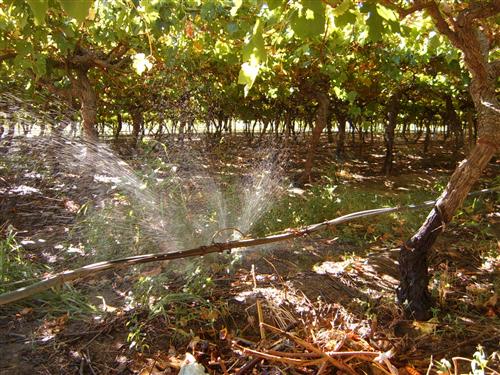Botswana
The irrigation potential in the Orange-Senqu River basin in Botswana is negligible (FAO 1997).
Lesotho
In Lesotho, irrigation is only responsible for 1% (0,6 Mm3) of water use each year (Aquastat Lesotho 2009). Over the last 40 years numerous large-scale top-down irrigation development projects have been initiated, but very few still function today. A survey in 1999 found that of the 2 637 ha equipped for sprinkler and surface irrigation in Lesotho only 67 ha were still operational and even these relied on donor aid.
Successful projects include small-scale irrigation and water harvesting initiatives based on an individual approach to communally-owned irrigation schemes. Private irrigation has also been successful, and is used to improve household food security and (at times) provide enough excess for sale at rural markets.
There are several contrasting estimates of the irrigation potential of Lesotho. At the most optimistic end, the long-term irrigation potential has been estimated at 12 500 ha. The other extreme, taking into account reduced water availability as a result of the Lesotho Highlands Water Project, the high cost of irrigation development and the limited market for high value crops, estimates potential for new irrigation at no more than 1 000 ha (Aquastat Lesotho 2009).
Namibia
In Namibia, irrigation schemes are mainly located along the lower Orange River where perennial water is used. The most notable irrigation schemes are at Noordoewer/Vioolsdrift and Aussenkehr, and from Komsberg to Noordoewer. The Noordoewer Scheme and Aussenkehr Schemes together have the potential to irrigate 2 000 ha (Aquastat Namibia 2009). The Hardap Irrigation scheme has a fully developed irrigation potential of 2 260 ha. It is also anticipated that about 1 000 hectares of land will be brought under irrigation in the next few years, at the proposed Tandjieskoppe Irrigation Scheme at Noordoewer. The Naute Irrigaiton scheme is located downstream of the Naute Dam and has reached half of its potential.
Namibia is permitted to abstract a minimum of 0,5 km³/year of water from the Orange River (Lange et al. 2007). This water is used to meet a gross requirement of 8 500 m³/ ha per year, with an estimated irrigation potential of 25 000 ha.

Irrigation is important to sustain vineyards in Aussenkehr, Namibia.
Source:DRFN 2006
( click to enlarge )

